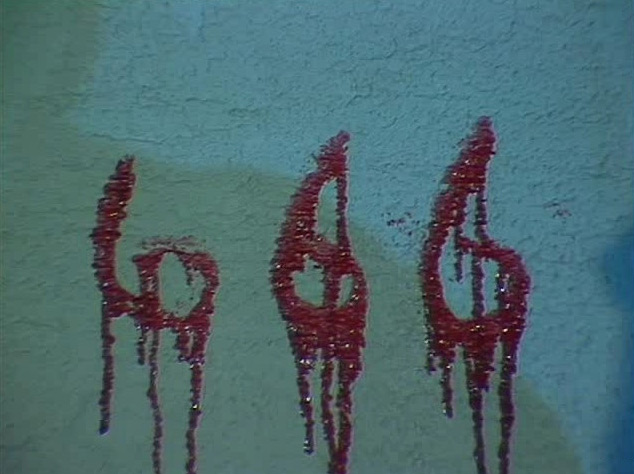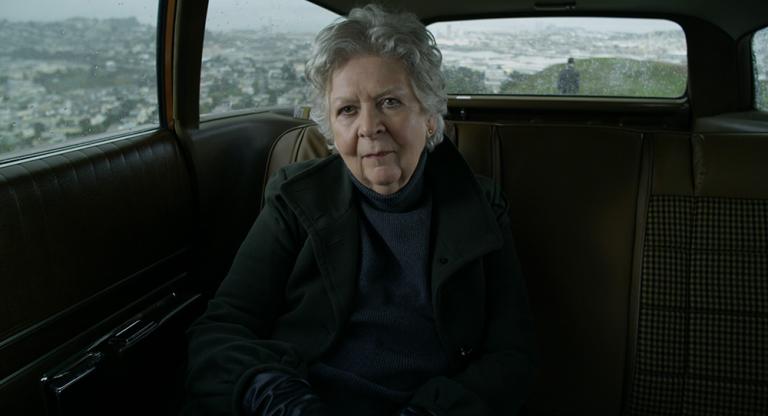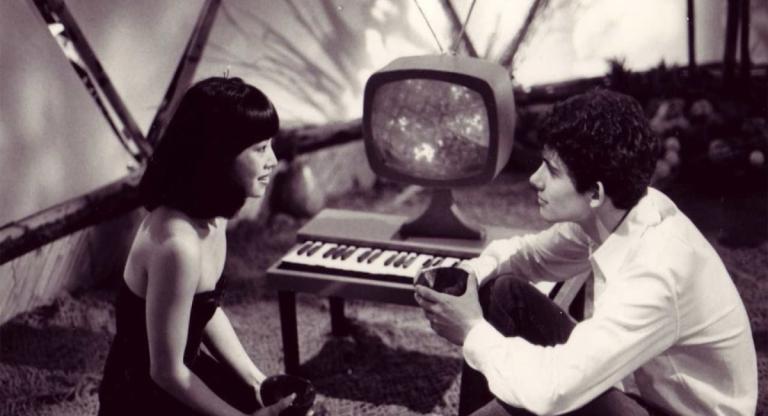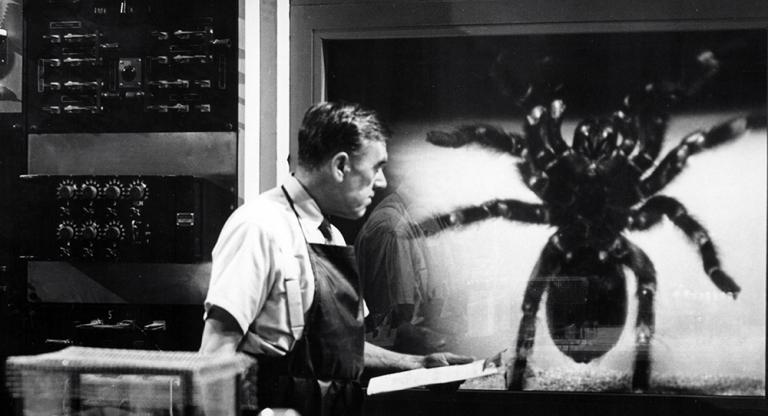Olaf Ittenbach is one of cinema’s most transgressive goremongers, and The Burning Moon (1992) is his masterpiece. Following his opening salvo, Black Past (1989), and preceding his ambitious splatter epic, Premutos: The Fallen Angel (1997), Ittenbach unleashed this anthology consisting of two nihilistic and violent tales, the second of which climaxes in a sequence that pushes beyond the accepted boundaries of taste and what one might expect on such a modest budget. Released on the infamous Dead Alive video label—which also offered video store creeps stomach-turning fare like Traces of Death (1993), Man Behind the Sun (1988), and Violent Shit (1989)—The Burning Moon is a classic of hardcore German SOV-horror that feels aggressively downbeat.
The film frames its two nested narratives as bedtime stories. For his storyteller, however, Ittenbach doesn’t choose mom, dad, or Mary Poppins, but a deranged drug addict. As the junkie’s little sister huddles under her covers, the narrator tells the story of a woman who goes on a blind date with a serial killer. Ittenbach infuses his horror and gore with a real knack for action filmmaking, ending this first story in a complex, effects-laden bloodbath. The second story follows a priest whose deviant activities lead to a host of bloody deaths, suicide, and a trip to Hell. It’s here that Ittenbach’s film really earns its notoriety, with Hell set in what appears to be a creepy basement where demons enact an unparalleled circus of torture and gory mutilation that feels pulled straight from a Cannibal Corpse lyric sheet.
Ittenbach, who also created the film’s wildly graphic and impressive special effects, has a tone all of his own, combining the lonely, almost pastoral quiet of the German suburbs with the darkest of gallows humor and punk attitude. The Burning Moon isn’t afraid to go too far. It paints its characters and society with a fairly unsympathetic brush, and this is part of what makes it uniquely subcultural. Of course hardcore horror fans like gore, but Ittenbach’s film captures another important aspect of the most diehard’s alternative ethos: that they don’t give a fuck about the fake niceties of polite society and its hypocrisy; hence, Ittenbach making his priest a vicious killer and having multiple characters take their own lives in violent fashion. The debt to Jörg Buttgereit’s Nekromantik (1987) is obvious, but Ittenbach infuses the misanthropic antagonism of this outré classic with the artistry of Tom Savini, enlivening the former’s taedium vitae with a jubilant spray of color (mostly red), gunplay, and stunts (performed by the director himself).
The Burning Moon is the stripped down death metal demo—think Carnage’s “The Day Man Lost”—version of a Romero or early Peter Jackson film. But as some connoisseurs of heavy music know, a 4-track tape can often be far more exciting and uncompromising than a high-budget studio album. Like the most extreme underground metal, Ittenbach’s film offers up its technical wizardry in the service of something intentionally uncommercial: a repudiation of the limits society puts on cinema and art.
The Burning Moon screens tonight, October 22, and on October 31, at Spectacle as part of the series “Transcending the Boundaries of Pain — Three Visions of Hell from Olaf Ittenbach.”



